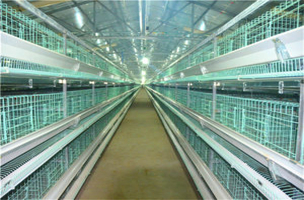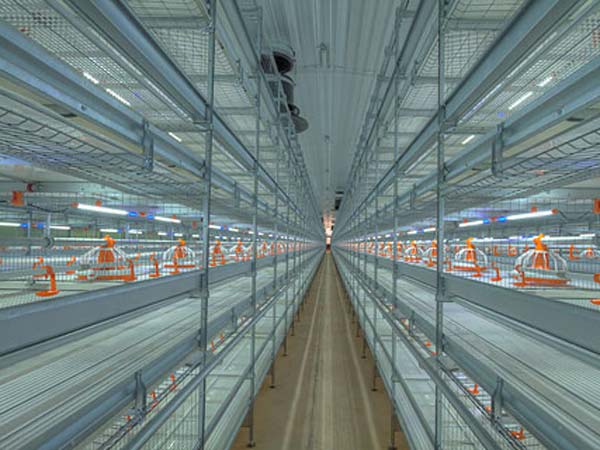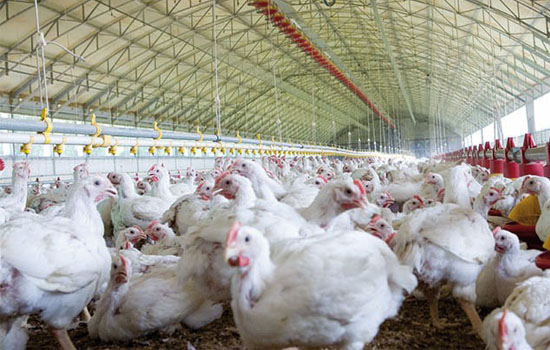Temperature control using chicken raising equipment
- Published in Chicken cages
When we use the chicken battery cages to raise chicken equipment, the chicken cage is equipped with a chicken house environment control device to achieve reasonable regulation of the temperature and humidity of the chicken house. In order to ensure the growth of chicks, etc., the regulation of chicken house temperature should be within a reasonable range. The temperature control of the chicken equipment is different in the temperature requirements of the chicken at different growth stages: the chicken just out of the eggshell needs 32 degrees Celsius to 34 degrees Celsius. Later, as the age of the week increases, the temperature gradually decreases, that is, it decreases by about 2 degrees Celsius for every one week of increase, and is maintained at 21 degrees Celsius to 23 degrees Celsius until the sixth week. Temperature is related to the healthy growth and feed utilization of broilers. If the brooding temperature is too high or too low, it will affect the yolk absorption, which will reduce the immunity of the chick and cause infection. If the temperature is too high, the drinking water of the chicken will increase, the temperature of the feeding will be reduced too low, the chicken will increase the feed consumption to maintain the body temperature, reduce the feed compensation, raise the chicken, and the incidence of the primary chest and leg disease of the chicken farming equipment is obviously increased.
1. The brooding method of heating equipment flue heating is more suitable for small and medium chicken farms. Bricks or adobes are used to form flue pipes. Larger brooding rooms can use long flue. Smaller brooding rooms can use field-shaped surrounding flue. When designing flue, the diameter of flue inlet should be larger. It should be gradually reduced to the outlet, so as to facilitate the circulation of heat and smoke, and prevent smoke from falling.

2. Ventilation equipment The enclosed house must be mechanically ventilated to solve the problem of ventilation and cooling in summer. There are two kinds of mechanical ventilation: air supply type and exhaust type. Air supply type ventilation is to use a fan to forcibly send fresh air to the house to form a positive pressure inside the house to remove the dirty air. The exhaust type ventilation is to use a fan. The dirty air in the chicken house is forcibly extracted, so that the negative pressure is formed in the house. The fresh air equipment will raise the chicken equipment and mainly introduce what enters the house through the air inlet.
3. Water supply equipment Flat chickens can use the hanging tower type automatic water drinker. The water drinker is suspended from the ceiling by a rope, and the water inlet hose is connected to the main water pipe. The incoming water flows through the control valve. Drinking trays are both hygienic and water-saving.
4. The feeding equipment mainly uses the trough, and the caged chickens use long troughs. The automatic feeding is fed by the feeding machine and the chain feeder. Flat feeding chickens can use this feeding method or feed buckets. The chicks should use a shallow tray of feed, and the shape of the trough affects whether the feed can be fully utilized.
5. Illumination equipment is currently widely used for illumination. Many chicken farms have a timer switch that automatically controls the lights to replace the artificial switch lights, simulating the sun's illumination time. It can also be illuminated by fluorescent tubes, which are directed towards the ceiling so that the light is reflected through the ceiling to the ground. This scattered light is softer and evener.
6. Egg-laying equipment Breeding meat breeders or flat-bred laying hens can be double-layered egg laying boxes. In addition to flat net culture, bred chickens are often used in overlapping or stepped brooding cages. Laying hens are basically caged. Cultivating cages and caged chickens can make full use of space, increase feeding capacity, good sanitation, easy epidemic prevention, save feed, high cleanliness of eggs, and convenient management of chickens. Small group breeding cages can be equipped with curtain shade at one end of the cage to create a quiet environment for laying eggs for hens.





